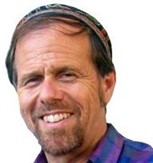In the 1700s Britain witnessed one of the most significant and cutting-edge historical events: the Industrial Revolution. Starting in Britain and quickly expanding to Europe and North America, one of the most significant innovations of that period was the development of assembly line manufacturing, conceptualising the idea according to which goods are produced by workers working along an assembly line. Drawing on this idea, Dr. Sherman Rosenfeld, biologist and science educator at the Weizmann Institute of Science, and partner in the Surrounded by Science project, conceptualises and compares the automated line to the “assembly line of formal education”.
“Society created an educational model alongside the industrial one”, says Dr. Rosenfeld, who has been advocating for many years to create a new educational model, by bridging formal with informal learning, with an explicit focus on STEM. This is precisely the goal of the Surrounded by Science project: to create a framework to support the creation of integrated STEM learning experiences that capitalise on the strengths of both formal and informal science learning contexts.

But why is it so important to distinguish between formal and informal education, since, in the end, the goal is the same: learning? According to Dr. Rosenfeld, “It matters a lot. There are fundamental differences between these two learning contexts across four levels: organisational, cognitive, affective, and socio-environmental level. Understanding and bridging between these differences can help create a more holistic and effective model of learning” [1].
When it comes to the expected impact of the project, Dr. Rosenfeld has no doubts: the main objective is to provide an evidence-based understanding of the key but yet under-researched role of out-of-school STEM learning activities on the 6 strands of science proficiency. Through this understanding, formal science education providers and also informal science engagement organisations can better cooperate to develop these strands, especially two that are neglected in formal settings: science engagement and science identity. As Dr. Rosenfeld points out, “A key challenge for the next generation of science teachers and educators concerns the ways through which they can help pupils and students to think of themselves as science learners and to develop a science identity that enables them to know about, use and contribute to science”.
But why now? As suggested by the projectʼs motto, because “We are Surrounded by Science!”. We have the tools that allow us to learn together. We have the ability, motivation and opportunity to exchange ideas and act as brokers between formal science education providers and informal science engagement organisations towards supporting the open schooling vision of the European Union, where schools in cooperation with external stakeholders share the responsibility for student learning.
Dr. Sherman Rosenfeld is a science educator at the Weizmann Institute of Science. His work focuses on promoting constructive change with students, teachers, schools and learning communities. He directed an interactive science museum in California, designed award-winning educational software, developed curricula for pre-college students and prepared hundreds of Israeli middle school science teachers to guide their students to engage in research and development projects. Learn more about Dr. Rosenfeld’s work by visiting his personal website.
References
[1] Fallik, O., Rosenfeld, S. and Eylon, B. (2013). School and Out-of-School Science: A Model for Bridging the Gap. Studies in Science Education, 49:1, 69-91.
